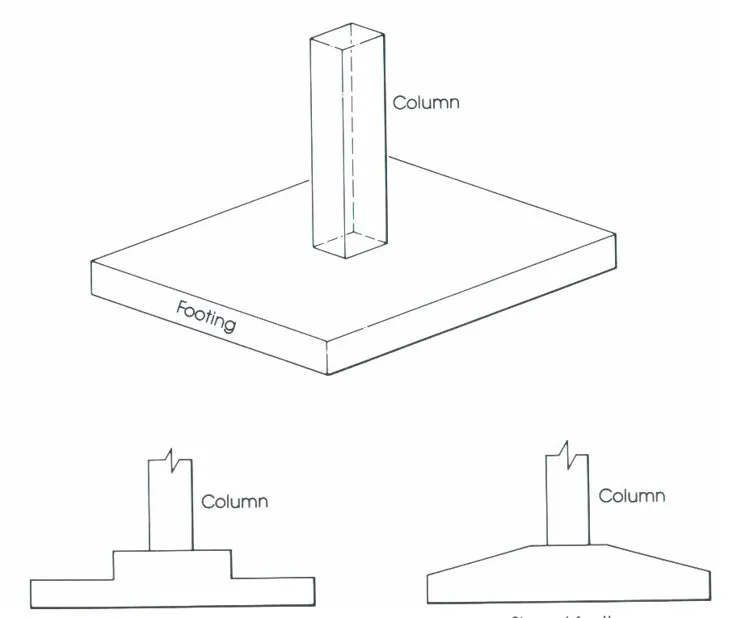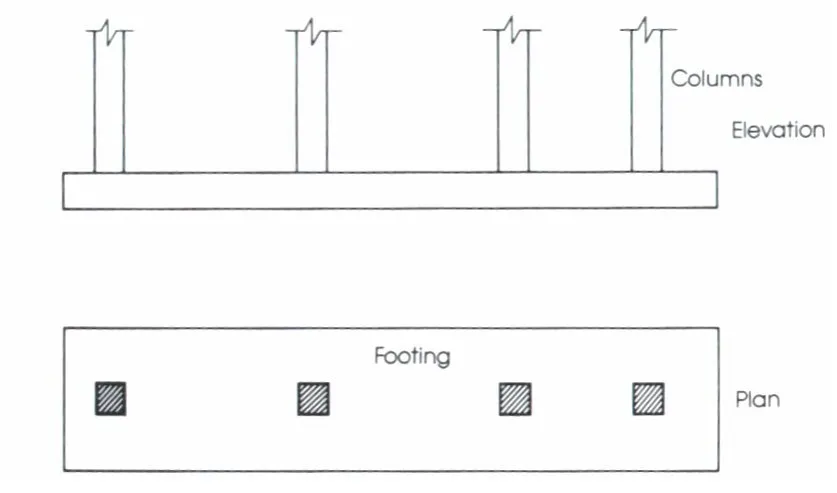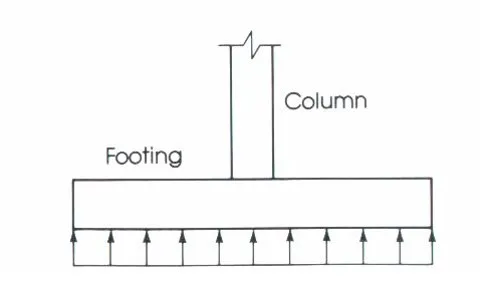If you want to know about the introduction of pile foundation or types of concrete and its uses or concrete mix design, please click the link.
Footings are a type of foundation that distribute the weight of a structure to the underlying soil or rock. There are different types of footings, and the choice of footing type depends on factors such as soil type, load-bearing capacity, and building design.
1) Footing (Definition)
- Footings are structural members used to support columns and walls and to transmit and distribute their loads to the soil in such a way that the load bearing capacity of the soil is not exceeded, excessive settlement, differential settlement, or rotation are prevented and adequate safety against overturning or sliding is maintained.
2) Types of Footing
i) Wall footings

- Wall footings are used to support structural walls that carry loads for other floors or to support nonstructural walls.
ii) Isolated or single footings

- Isolated or single footings are used to support single columns. This is one of the most economical types of footings and is used when columns are spaced at relatively long distances.
iii) Combined footings

- Combined footings usually support two columns, or three columns not in a row. Combined footings are used when tow columns are so close that single footings cannot be used or when one column is located at or near a property line.
iv) Cantilever or strap footings

- Cantilever or strap footings consist of two single footings connected with a beam or a strap and support two single columns. This type replaces a combined footing and is more economical.
v) Continuous footings

- Continuous footings support a row of three or more columns. They have limited width and continue under all columns.
vi) Rafted or mat foundation

- Rafted or mat foundation consists of one footing usually placed under the entire building area. They are used, when soil bearing capacity is low, column loads are heavy single footings cannot be used, piles are not used and differential settlement must be reduced.
vii) Pile caps

- Pile caps are thick slabs used to tie a group of piles together to support and transmit column loads to the piles.
3) Distribution of Soil Pressure

- When the column load ( P ) is applied on the centroid of the footing, a uniform pressure is assumed to develop on the soil surface below the footing area. However the actual distribution of the soil is not uniform, but depends on may factors especially the composition of the soil and degree of flexibility of the footing.

4) Design Considerations
Footings must be designed to carry the column loads and transmit them to the soil safely while satisfying code limitations.
- The area of the footing based on the allowable bearing soil capacity
- Two-way shear or punching shear.
- One-way bearing
- Bending moment and steel reinforcement required
- Bearing capacity of columns at their base
- Dowel requirements
- Development length of bars
- Differential settlement
5) General Requirements for Footing Design
- A site investigation is required to determine the chemical and physical properties of the soil.
- Determine the magnitude and distribution of loads form the superstructure.
- Establish the criteria and the tolerance for the total and differential settlements of the structure.
- Determine the most suitable and economic type of foundation.
- Determine the depth of the footings below the ground level and the method of excavation.
- Establish the allowable bearing pressure to be used in design.
- Determine the pressure distribution beneath the footing based on its width
- Perform a settlement analysis.
The size and design of footings are determined by soil conditions and the load of the structure. Proper footing design is essential for ensuring the stability and safety of the building.